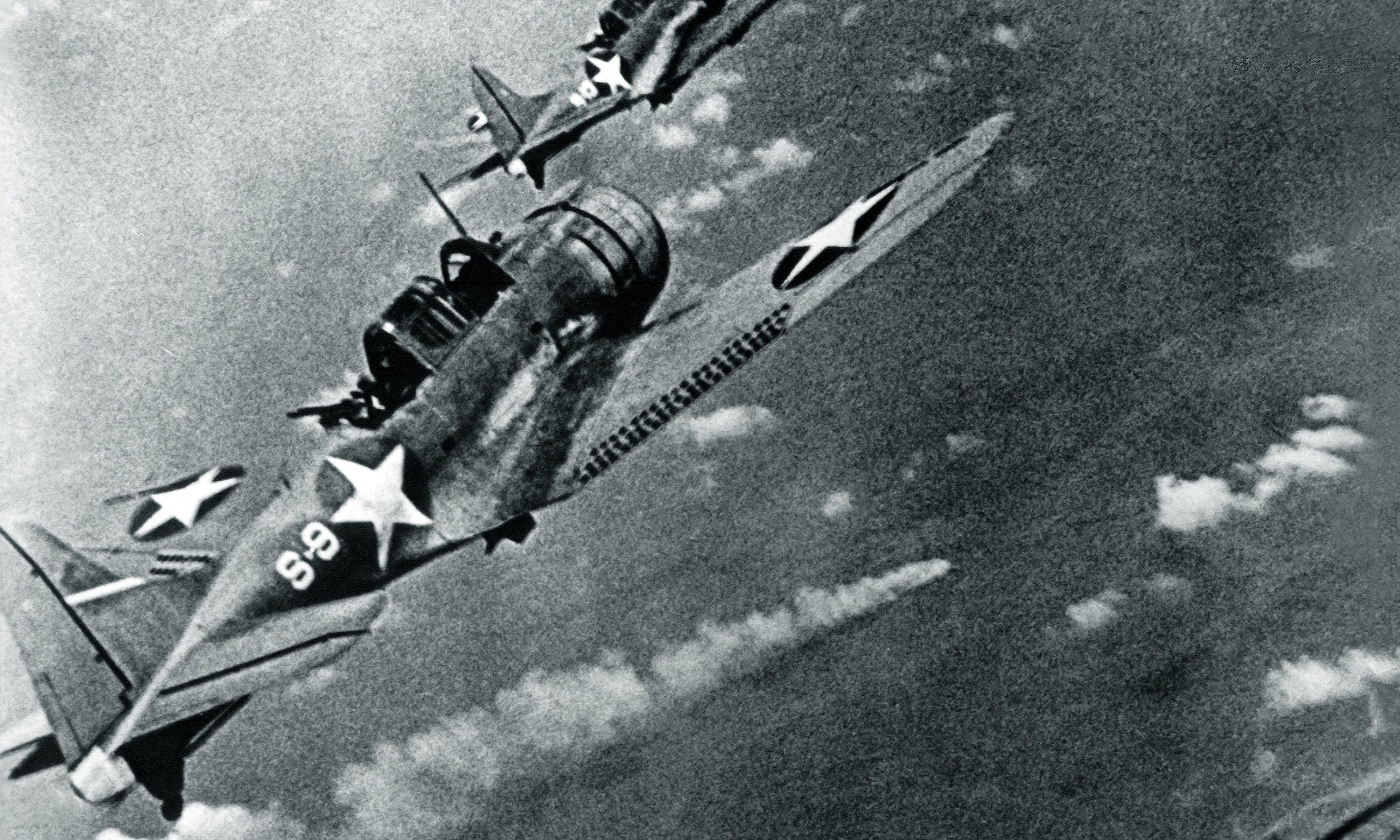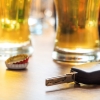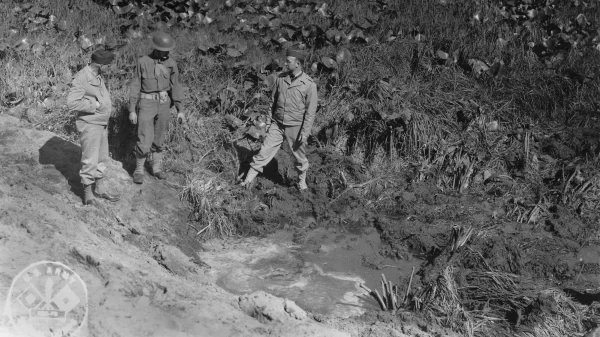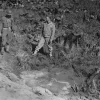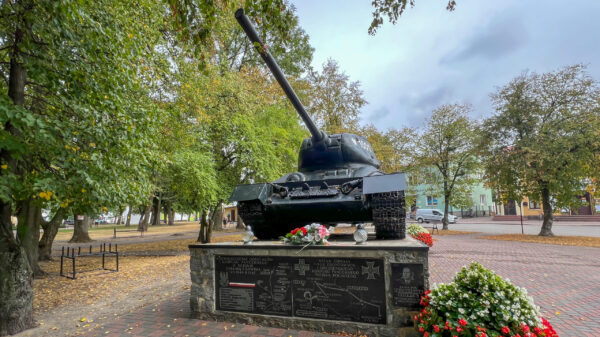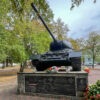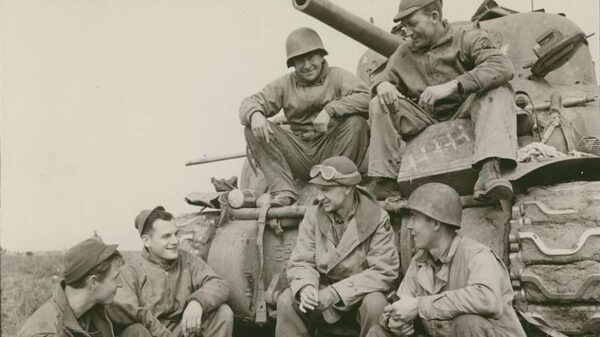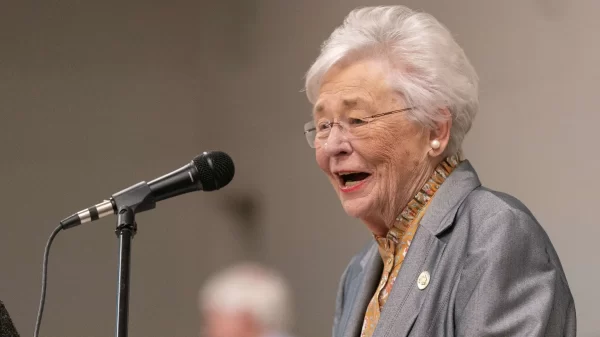From June 4 to June 7, 1942, one of the largest and most decisive naval battles of World War II was fought in the skies and waters over and surrounding Midway Island.
Japan had attacked the United State Navy at Pearl Harbor on December 7, 1941. For almost seven months the Japanese Empire had won victory after victory massively expanding their empire across much of the Pacific as well as deep into Asia. French Indochina (Vietnam), Singapore, New Guinea, the Philippines, the Dutch East Indies, Hong Kong, Burma, Guam, Samoa, etc. had all fallen to the Japanese. They were even threatening Australia, India and Sri Lanka.
Japan’s main goals were to end the threat of an anticipated United States counter offensive and ending American support to China and Australia by ending the U.S. Navy’s presence in the central Pacific. The Japanese and U.S. aircraft carrier fleets had just fought the Battle of Coral Sea, which was costly to both sides, but which had left the allied sea lanes open to Australia temporarily checking Japan’s ambitions in the South Pacific.
Japanese master strategist Admiral Isoroku Yamamoto devised a cunning plan where he would send a powerful fleet to attack the Aleutian Islands to draw the American carriers north in defense of Alaska. Meanwhile his vaunted carrier task force would strike at Midway in the Hawaiian Islands. The U.S. carrier fleet would have to go from fighting one battle in the North Pacific and turn around and fight a much larger naval force that was between them and their home port of Pearl Harbor. After his carriers had eliminated the threat of the U.S. Navy’s pilots, Yamamoto himself would arrive leading a third even larger fleet, that featured the most powerful battleship task force in the world at the time to do away with the remaining surface ships of the U.S. Pacific Fleet, while landing Japanese ground forces on Midway. The Japanese would then contest for control of the Hawaiian Islands and attacking Pearl Harbor. Loss of air superiority over Pearl Harbor and naval superiority in the Hawaiian Islands would then force the U.S. navy to forward deploy from San Diego and San Francisco.
It was a brilliant plan, but it relied on surprise rather than brute force, which Yamamoto could have had if he combined his three fleets into one powerful super force. Unfortunately for Yamamoto, U.S. Naval Intelligence had cracked the Japanese codes, thus U.S. Admiral Chester Nimitz knew that the attack on the Aleutians was just a ruse to make him order his carriers north away from Hawaii.
During the Battle of Coral Sea the Japanese light carrier Shoho had been sunk. The carrier Shokaku had been severely damaged and was in drydock for months of repairs. The carrier Zuikaku was undamaged, but half of her air group had been lost and she was in port waiting for replacement planes and pilots so was unable to participate in the Midway mission. The American aircraft carrier U.S.S. Lexington (CV-2) had been lost and the Yorktown (CV-5) had been damaged in the battle. Japanese naval intelligence had listed the Yorktown as destroyed or inoperable.
Knowing battle was imminent, Nimitz had summoned Yorktown and her task force under Admiral Frank Jack Fletcher back to Pearl Harbor from the South Pacific and dock workers hastily repaired the damaged aircraft carrier. Efforts to finish repairs and resupply Saratoga (CV-3) and a shortage of escort ships meant that the fourth American carrier would arrive from California too late to participate in the battle. Admiral Raymond Spruance was given command of the larger U.S. task force, Enterprise (CV-6) and Hornet (CV-8) because Vice Admiral William Halsey was sick.
While the Japanese were landing ground troops on Attu and Kiska in the Aleutians (the first time the U.S. had lost North American soil since the War of 1812), Nimitz instead ordered the aircraft carriers Hornet, Enterprise, and Yorktown to a position where they could defend Midway, the Japanese main target.
On June 3, 1942 a U.S. Navy PBY Catalina floatplane found the Japanese carrier fleet alerting U.S. forces that the attack was underway. On June 4, the Japanese carriers Akagi, Kaga, Soryu, and Hiryu launched a massive aerial bombardment with 108 aircraft on the U.S. base at Midway. 25 of those planes were lost or severely damaged in the attack.
The Japanese had no idea that the three U.S. carriers were just to the east of the island and ready for battle. The Japanese aircraft did a lot of damage to Midway and destroyed the American fighters defending Midway; but the airfield remained intact so the airbase was still a threat from U.S. bombers. The Japanese air crews headed back to their carriers to rearm and refuel for another bombardment of the little island base to take out the airfield. 52 American aircraft launched from Midway, including B26s and B17s, launched from the airbase before the Japanese attack attacked the Japanese fleet. 17 of these aircraft were lost in the attacks. They cost the Japanese just three fighters. One B26 narrowly missed hitting the Japanese flagship, the carrier Akagi, in a suicide attack.
Still not realizing that the main threat was from the American aircraft carriers, not the U.S. Army Air Corps, U.S. Navy, and Marine planes based on the island; Admiral Chuichi Nagumo, who commanded the carrier task force, made the error of deviating from Yamamoto’s orders as well as standard Japanese operating practices and ordered all of his reserve bombers, which had been armed with torpedoes and bombs especially for naval combat to instead rearm with bombs to attack the island.
45 minutes later a Japanese scout plan reported seeing a sizable American fleet to the east of the island. Nagumo then ordered his crews to rearm the planes they had just rearmed with bombs for land assault to instead be rearmed again with naval bombs and torpedoes again. Another 30 minutes passed before the scout plane reported seeing one American aircraft carrier. Now the planes from the morning attack on Midway were returning low on fuel. If Nagumo launched his attack, those planes and pilots would have run out of fuel while the flight decks were used to launch. Nagumo ordered the decks used for the returning planes and pilots.
By this time the combined air arms of three American aircraft carriers were already in the air bound for the Japanese fleet. The American attack was not well coordinated. Hornet’s flight group went off in the wrong heading so never made contact with the Japanese fleet. Lt Commander John Waldrop broke away from Hornet’s main group and led his torpedo bomber squadron on the correct heading. The Douglas TBD Devastator torpedo bombers of VT-8 attacked the Japanese fleet and all 15 were shot down. Ensign George Gay who was later rescued at sea was the only survivor of VT-8. Devastators from Enterprise’s VF-6 attacked next with no success and a loss of 10 of 14 planes. This was followed by Devastators from Yorktown’s VT-3 which lost 10 of 12 planes (the painfully obsolescent Devastators were never used in combat again after Midway). No Japanese ships had been sunk even though some torpedoes came very close and they had forced the Japanese ships to take evasive maneuvers. The Japanese Mitsubishi A6M Zeroes protecting the Japanese carriers were following the attack runs of the unprotected slow old torpedo bombers down to just off the surface of the ocean and had used lots of ammunition.
At that moment, three squadron of Americans Douglas SBD Dauntless dive bombers arrived: VB-3 from Yorktown and VS-6 and VB-6 from Enterprise. Enterprise’s nearly two full squadrons attacked Kaga almost simultaneously. She received four or five direct hits which caused numerous explosions of the bombs that were stacked in the hangar. Lieutenant Richard Halsey Best and his two wingmen attacked the Akagi. She was hit only once, but the bomb hit midship igniting a tremendous explosion of the fuel and stacked bombs in the hangars. Yorktown’s VB-3 attacked Soryu. Despite the valiant efforts of VT-3, Hiryu was not hit. Massive fires were soon raging on Soryu, Kaga, and Akagi.
Rear Admiral Tamon Yamaguchi on the Hiryu took operational command of the Japanese force, while Nagumo was being evacuated from the burning Akagi. He responded by launching 18 Aichi D3A dive bombers and six Mitsubishi A6M “Zero” fighters to follow the American attack force that was returning home critically low on fuel. The Japanese found the Yorktown and attacked. Yorktown was hit by three bombs. The Japanese lost 16 aircraft in this attack. The returning Japanese pilots reported having sunk an American aircraft carrier.
The Yorktown’s crew, working feverishly, covered the holes on the flight deck to get the flight deck operational again and got the boilers working again in under an hour. The Japanese collected all their remaining Japanese aircraft on Hiryu and launched a second attack wave of ten Nakajima B5N torpedo bombers and six of the A6M Zero fighters. This wave also found Yorktown, but the Americans had done such a good job of repairing the aircraft carrier that the Japanese pilots could not tell it had been damaged. Yorktown was hit by two torpedoes and lost all power. The Japanese lost seven airplanes in this attack. The returning Japanese pilots reported sinking a second American aircraft carrier convincing Yamaguchi that there was only one American aircraft carrier left.
That afternoon a scout plane from Yorktown found the Hiryu. Enterprise sent 24 SBD dive bombers (including aircraft formerly assigned to Yorktown) to intercept. Hiryu was hit four times. Hornet due to a communications mix-up was late to launch. Their planes targeted the remaining Japanese escorts ships; but failed to score any hits. Yamaguchi and the Hiryu’s captain chose to go down with the ship.
The Japanese fleet under Yamamoto continued on towards the American fleet through the night in hopes of surface combat. With the Yorktown out, Fletcher ceded command of his task force to Spruance. Spruance had been moving towards the Japanese forces all day and into the night to give more of his pilots a chance to return before they ran out of fuel. That night he switched directions to avoid encountering the powerful Japanese battleships at night.
On June 5, Spruance launched his planes on a search and destroy mission in hopes of finding the main Japanese fleet; but failed. American planes did attack one Japanese destroyer; but scored not hits.
On the night of June 5, the submarine U.S.S. Tambor reported “four large ships” just 90 miles to the west of Midway. Spruance assumed this was the main Japanese force to invade the island so moved to block the invasion force. In reality this was just four cruisers and two destroyers that Yamamoto had detached to bombard the island and later ordered to turn back. They spotted Tambor following them and took evasive action. In the confusion, the heavy cruisers Mogami and Mikuma collided. The Mogami was heavily damaged. The Tambor attacked, but was unsuccessful. An SBD dive bomber later sunk the Mikuma. The Mogami returned to port for repairs. The commander of the Tambor lost his command for the vagueness of his report and the unsuccessful attack. Two destroyers were also bombed and strafed. as they retreated back towards the main Japanese fleet.
The American sailors continued to work on the badly damaged Yorktown. The minesweeper U.S.S. Vireo was towing the ship in hopes of bringing the stricken aircraft carrier back to Pearl Harbor for repairs and an eventual return to the war. On June 6 the Japanese submarine I-168 fired off a salvo of torpedoes that hit Yorktown and the destroyer U.S.S. Hamann, which was supplying auxiliary power to the aircraft carrier. Hammann broke apart immediately and eighty sailors on the destroyer were killed. The Yorktown sank on June 7.
The Japanese lost approximately 3,057 men, 37 were captured, four carriers, one cruiser, and 248 aircraft, while the United States lost approximately 307 men (including 3 who died in captivity), one carrier, one destroyer, and 144 aircraft. This critical US victory stopped the growth of Japan in the Pacific and turned the tide of the war. put the United States in a position to begin shrinking the Japanese empire through a years-long series of island-hopping invasions and several even larger naval battles.
The 24 newer, faster, mass-produced Essex class of American aircraft carriers, then in production, came on line beginning in December of 1942 giving the U.S. naval and air superiority in both theatres of the war. The second ship in that class, CV-10 originally the Bon Homme Richard, was renamed the Yorktown after CV-5 was lost. She served from 1943 until 1970 and has been a museum ship in Charleston, South Carolina since 1975.
(Wikipedia and the World War II museum website were consulted in the writing of this article).





































